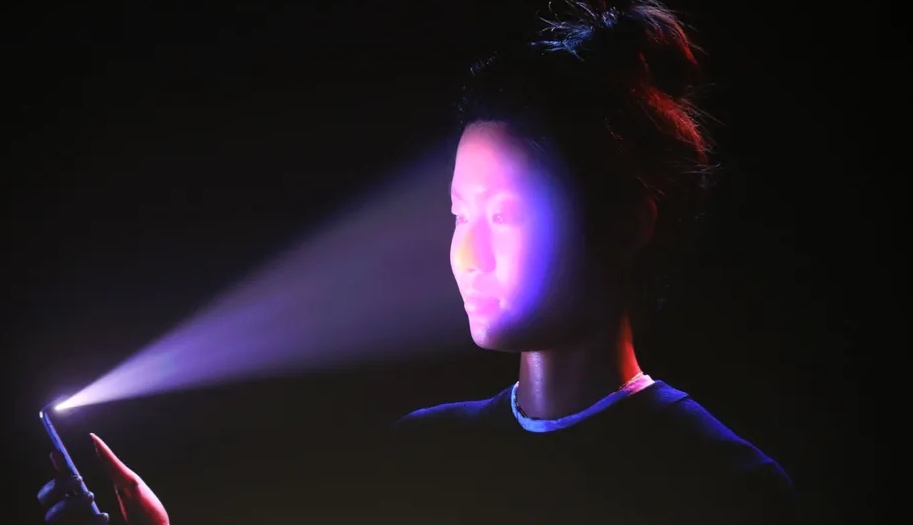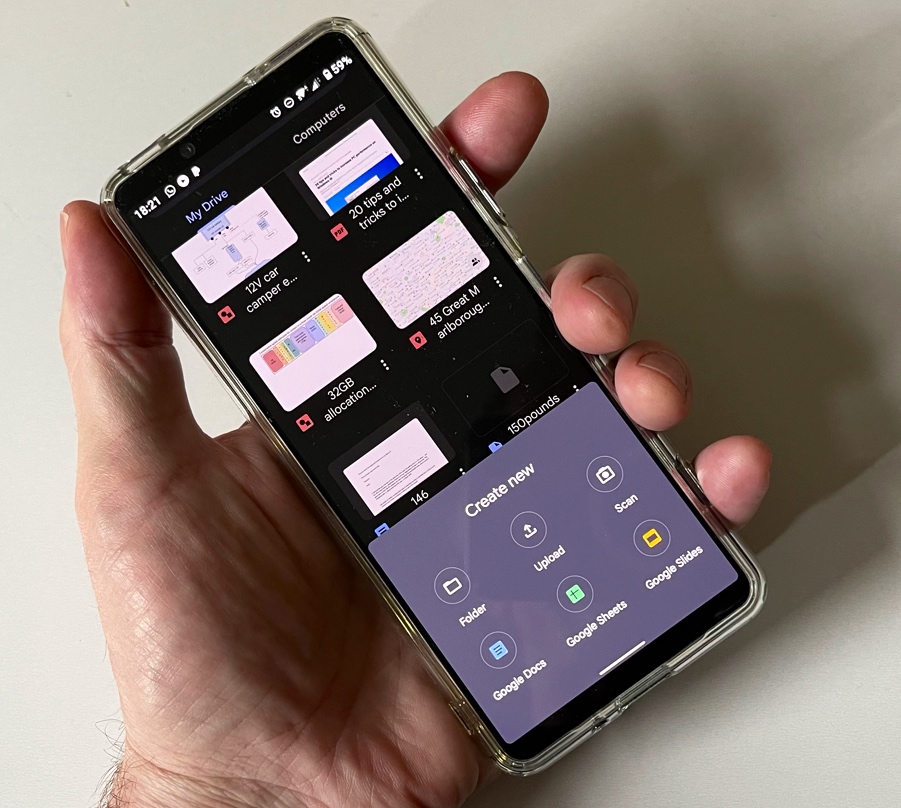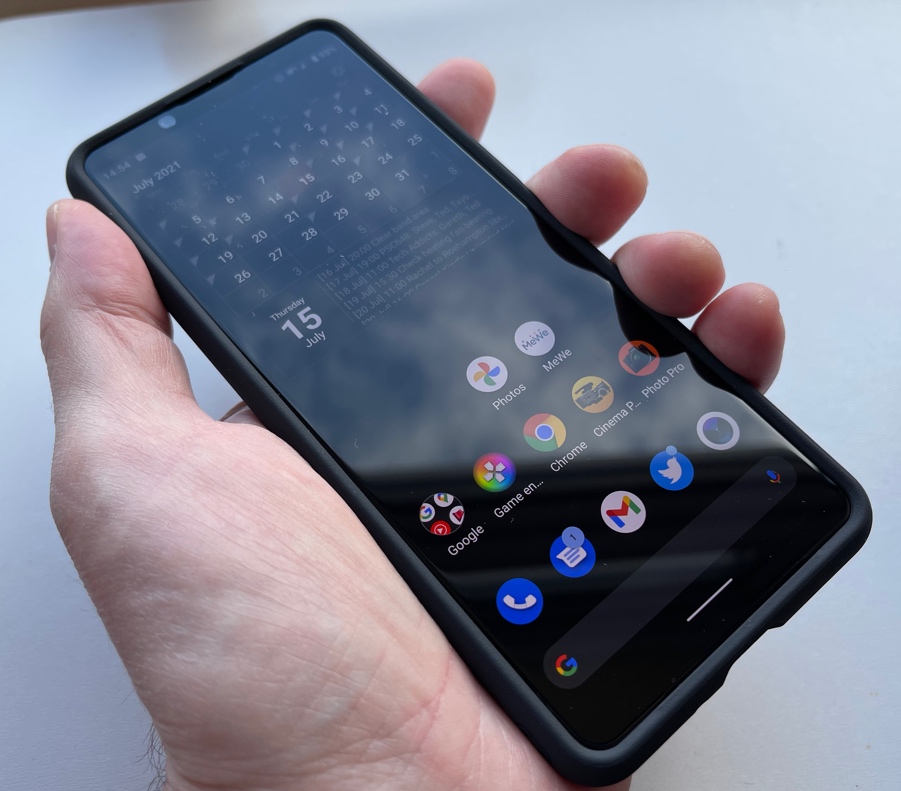I should note that, as per my original article, simply trying to choose a smartphone OS based on a table of functionality is like trying to do the same with a car. We all know that when buying a car (or clothes, my wife says!) you have to see it and try it in person. So I merely represent some observations below - feel free to ignore them or heed them, everyone's smartphone journey is different.
Note that in much of the prose below, I'm using my experiences with the Sony Xperia 5 ii, running Android 11, and the iPhone 12 Pro Max, running iOS 14, of course. Many other models 'are available', as they say, but these two provide a useful 2021 comparison.
The case for iOS (for me): 1 - Multimedia
As an excellent example of how a bullet point table or specs sheet doesn't tell the whole story, I've noted that in almost all aspects multimedia is better on iOS. Which is odd, as Android supports a more transparent file system (including microSD where the device has a slot), but in terms of playing media, standalone and especially within web pages or social media feeds, iOS loads media faster and switches to landscape more consistently.
A typical annoyance on the latest Android handsets with flagship chipsets is that embedded media would start playing and I'd tap on the 'full screen' icon and rotate the device, after which it would go full-screen, then glitch back to portrait, then finally resume playing in landscape. All this only took a second or so, but that it happened at all would annoy me. Several times a day. In contrast, on the iPhone playback would transition smoothly to full-screen landscape, whatever the real time status of the device's orientation. I know, I know, small and picky things, but they add up.
Add in working '10s' or '15s' nudge keys and a more responsive timeline grab handle in media, and I was always more confident in watching web-hosted media on iOS than on Android. In fairness, the latter has several different versions and implementations, so I'm being a little general here and just applying my experience with (most recently) the Xperia 5 ii and Samsung Galaxy S20 FE. But hey, it's a data point.
The case for iOS (for me): 2 - Ecosystem
Ecosystem is something that's often touted as a make or break factor in choosing a smartphone OS - and that's right to a degree. For the most part, I was able to do everything I wanted to do on a smartphone on either iOS or Android. Browsing, social media, email, multimedia (see above), IoT control (mainly cameras), online banking, shopping, and so on. I'm signed into everything on both platforms, typically, and switching is almost as easy as swapping my SIM card (I've flip-flopped about six times in the last two months!).
With a couple of notable exceptions. Firstly Apple's iMessage, which supports everything from text to video, and is by default carried over data and not over traditional SMS mechanisms. Now, modern RCS messaging on all platforms and carriers should rival this but in practice they're not quite there yet. So we had the position where I'd be on Android and my iOS-using wife and daughter would have to remember that they couldn't send me stuff (images, video, mainly) through the day unless they went via Whatsapp.
To be fair, they often did remember, but not always, plus it was an extra chore. Now, if we all used just Whatsapp (or some other rival over-data messaging system), then that would be the standard. But a) it's owned by Facebook and most of us hate having anything to do with that particular company), b) the number of alternatives are just way too high for anything to become a standard. And, most importantly, c) on iOS, Apple makes it so easy to just use the one application for everything. Send anything you like to other iPhone users (e.g. family) and it falls back gracefully to send and receive standard SMS if needed to other mobiles.
In short, by using iMessage I make my family's communications simpler. Which makes for a happier life generally(!)
But there's more, at least in my case. The 'Find my' system is glorious at helping me track my wife, and she me (if needed). Why would I want to? Usually for the simple reason that I'm making tea (evening meal, for overseas readers!) and want to time it being ready for when she arrives home from work. Her commute is only 15 minutes, so timing is very helpful here. Or when she is off cycling and has a puncture (this happened once in the last year) then I can find her in seconds on the 'Find my' map without her having to touch her phone at all or indeed remember (in a time of stress) how to share location, arriving with the car or on bike myself to render assistance.
I know this is a small thing in the wider world of smartphone use, but it's become very handy to me. Yes, Google Maps on Android has a location sharing system, but there's more to set-up in order for it to work all the time and the last thing I want to bother my family with is fiddling with settings every now and then to turn something on in Maps. Apple's 'Find my' system is baked into the heart of the OS, is 'set and forget', and, as they say, 'just works'.
Above, the blue dot is my location and my wife is also home (hey, it's just an example photo) - but note that she's at the back of the house on the patio and I'm at the front. Positioning and location is so precise on most modern phones!
Finally, coming under the heading of ecosystem, I guess, is that if you have a Mac laptop then AirDrop over Wifi is transformationally easy. Yes, there are some Wifi-direct systems in the Android world, including Microsoft and Samsung's attempts with Your Phone and Link to Windows, but none come close in terms of raw speed. When I shoot a Phones Show video, two taps are all that's needed in Photos to get the 1GB of footage onto my Mac in under 30 seconds. It's very convenient, to say the least, and beats plugging in a cable, choosing a transfer mode on the phone and then faffing around to drag and drop a file between specific folders in File Explorer or Android File Transfer.
The case for iOS (for me): 3 - Face ID
This is slightly controversial because the one thing that has struggled during a year of a pandemic and mask-wearing has been Face ID on a few billion iPhones. But let's put aside the oddity that is Covid-19 and think about life as it returns to normal.
The number of Android phones with working (secure) face scanning is, I believe... three. And two of them are two year old Pixel 4 models that proved a commercial disaster (usual Google issues - overpricing, crippled features, odd design). 99.9% of Android OS phones use fingerprint scanning, either under-screen (slow, inconsistent, at least for me) or on a capacitive sensor on the side or back (instant, reliable, but you do need to reach round the phone to a degree). Now, some (though not all) Android OS phones also support 'Face unlock', using the selfie camera to recognise the basics of your face and unlock the screen. But this is purely image-based and can be easily fooled, which is why it is never used for authentication for anything serious - think banking access, tap-to-pay, buying applications, passwords, and so on.
So yes, away from Covid-19 masks, Face ID is undoubtedly and demonstrably superior. It's always 'more than' instant, in that the phone recognises your contours in 3D in minute detail while you're still reaching for it, so that there's no extra thing to press or an extra wait while your face is scanned. It's also always 100% secure, enough for financial transactions and the increasing number of applications which contain private information.

Face ID doesn't actually illuminate your face with visible light - this is just an illustration. It uses an infrared flood illuminator and dot projection system to scan your face. And it's clever enough to adapt to small changes, such as make-up (not me!) or facial hair, or even ageing. Which is pretty cool.
Unlike a few other Apple 'innovations' over the years (the much-hyped and poorly thought out '3D Touch' springs to mind), Face ID is a technology which broke out with ease from the Apple reality distortion field. Face ID genuinely and absolutely works and I cannot understand why more Android phones don't yet have something similar. Is it that hard to copy?
The case for Android: 1 - all Google, all the time
Now, while Google has implemented almost all of their applications and services on iOS (so I use GMail, Google Maps, Google Drive, YouTube, etc. on the iPhone), when I switch back to an Android phone it's evident that a Google-centric life is better on Android. More services integrate at a lower level and in a better way. Rather than Google services being an add-on (as on the iPhone), they're understandably baked into Android.
So, when following a tap trail from a Gmail notification through to a shared online Google document through to embedding Google Photos images there and then sharing at each stage to others, Android is generally a delight. True, some Android manufacturers tinker with this pure Google approach and try to divert you to their own apps and services along the way, but you can usually trim or circumvent these attempts and get back to Android the way Google intends it to be. And the way it is implemented on Google's own Pixel phones.
At which point it's worth noting that there's no major reason why Google's Pixels shouldn't be as all-conquering as Apple's iPhones. Yet whether it's over-pricing or under-availability or under-marketing, whether it's a design defect that has to be worked around in software or a reliance on some third party chipset for which drivers are no longer available, for all these reasons (perhaps) most regular people have only heard of Pixels in the last year or so (through TV ads). Every Android enthusiast wants to own and love a Pixel - yet the hardware (the upcoming Pixel 6 range notwithstanding) has always been one step behind the cutting edge of smartphone tech.
It's also worth noting why I keep all my 'stuff' in Google's services rather than Apple's. Partly inertia, in that Google got cloud sync and cloud storage right first and so it's where most geeks and enthusiasts ended up. And now that everything significant of mine is in Google's cloud it's almost unthinkable to move everything over. Plus Apple's early attempts at cloud syncing through iCloud were a disaster and people are still getting confused by iCloud today in 2021, I contend. (True, there's a third ecosystem, and I do have a lot of my online backups and shared files in Microsoft's OneDrive, but that's more to do with getting a Terabyte free with Microsoft/Office 365. The Microsoft applications work very well on both iOS and Android, thankfully.)

The case for Android: 2 - choice, and more choice
Finally, it's self evident that there's almost infinite choice of hardware in the Android world. Rather than picking one of the three sizes/form factors that Apple offers each year, there are - quite literally - over 300 smartphone models running Android launched each year, spanning screen sizes from 3" to 7" and with weights from 100g to half a kilogram (again, no really, go look at the latest Ulefone!) Sprinkle in more or less every combination of screen tech, chipset, expandability, camera capabilities, and so on.

There is just so much choice here that it becomes far easier to find a 'sweet spot' handset that you love. In my case this is probably the aforementioned Xperia 5 ii, shown above, with blazing speed, slim form factor, genuinely professional camera, and super speakers. Yet without Qi charging, making the additional point that however much choice there might be in the Android world, you're still never going to get quite to the point of perfection - there's always something wrong or missing! (In the iOS world, you just accept that Apple has given a few limited choices and there's no point in sulking too much about what's missing - cough, 3.5mm jack, in my case!)
__________
I realise that there's a lot more to both operating systems in terms of underlying code and features, and would again refer you back to my semi-definitive comparison table. But I did also want to rant/chat/muse a little as well. If you've found this interesting then all comments are welcome below. Do you resonate with any of my points in either direction, or do you have extra reasons 'why iOS' or 'why Android' that you'd like to add?


